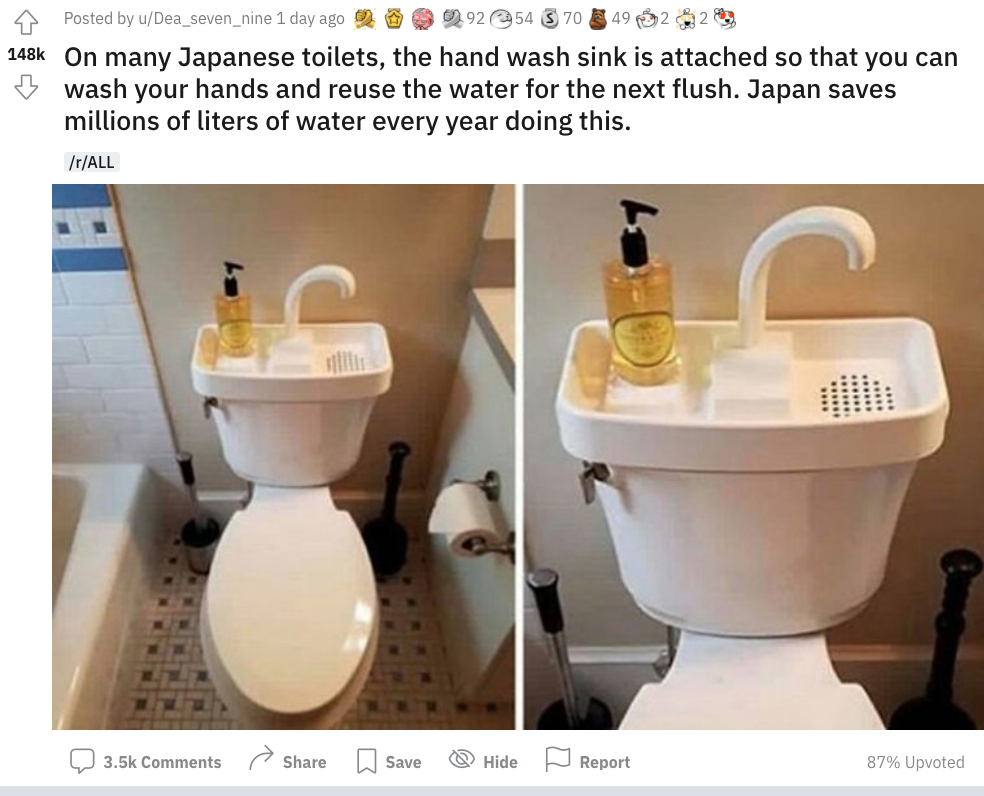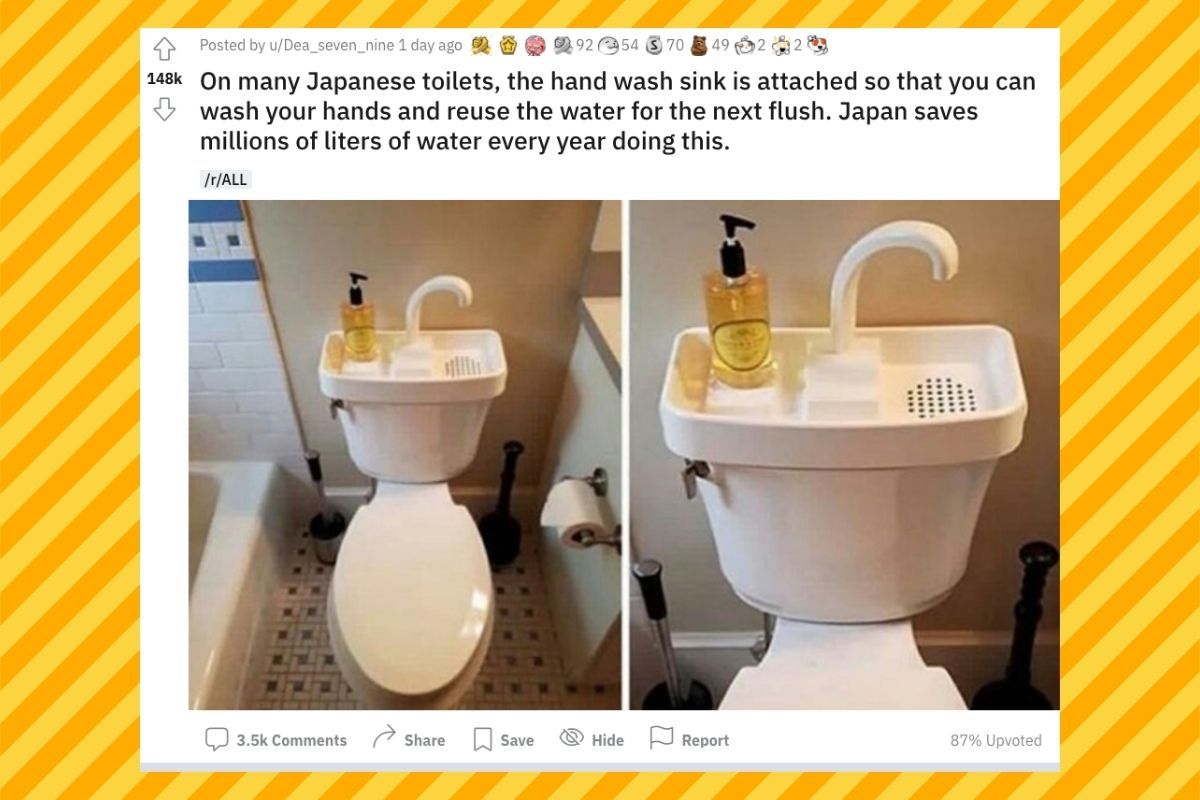A fixation on toilets took over the internet in mid-June 2021 when a social media user posted a photo to Reddit that claimed to depict a Japanese toilet with a hand sink attached to the top of it. According to the post, water from the sink is used to wash a person’s hands before it is reused in the toilet bowl for future business.

An internet search for the toilet-topping sinks revealed that there are several options available for less than $100. Product descriptions claim that the sink can be installed on a toilet in less than five minutes — simply take the already existing reservoir lid off of the toilet and replace it with the sink addition. A valve connects the faucet to the toilet and, according to customer reviews, water used to wash hands is then automatically drained into the toilet bowl and reused during flushing.
Similar products have been on the market in recent years and have been advertised as not only something to save water but a method that “encourages men to wash hands.” In 2013, NPR’s "All Tech Considered" featured the toilet-sink — and toilet-urinal — addition, noting that the combination has been around in Japan since at least 1956. According to an excerpt from Leonard Koren’s book, “283 Useful Ideas From Japan,” the Japanese inspired combo is both practical and budget-friendly:
"This system costs less than conventional toilets and comes in eight- and-16-liter sizes and a rainbow of colors. Also available for bathrooms are artificial flushing-sound generations that people can use to cover up the sound of what they're doing without wasting water."
The toilet review site, Toilet Found! noted that the toilet-sink systems became popular in Japan after World War II when the real estate came with a hefty price tag. The design was meant for small bathrooms and living quarters, where creativity and innovation were key to comfortability. In addition to space constraints, the system also conserves and reuses water and does not require a heater to warm the water, potentially lowering utility bill expenses as well.
“The design is such that water from the supply line channels through the faucet for you to wash your hands. And then drained out through the sink drain and into the tank. The water will keep flowing to fill up the tank, until it gets shut off by the float,” wrote the review site. “This way water is not wasted. Compare to the usual when you have to wash your hands on a separate sink with clean water. And it adds up to more water used for each visit to the toilet.”

